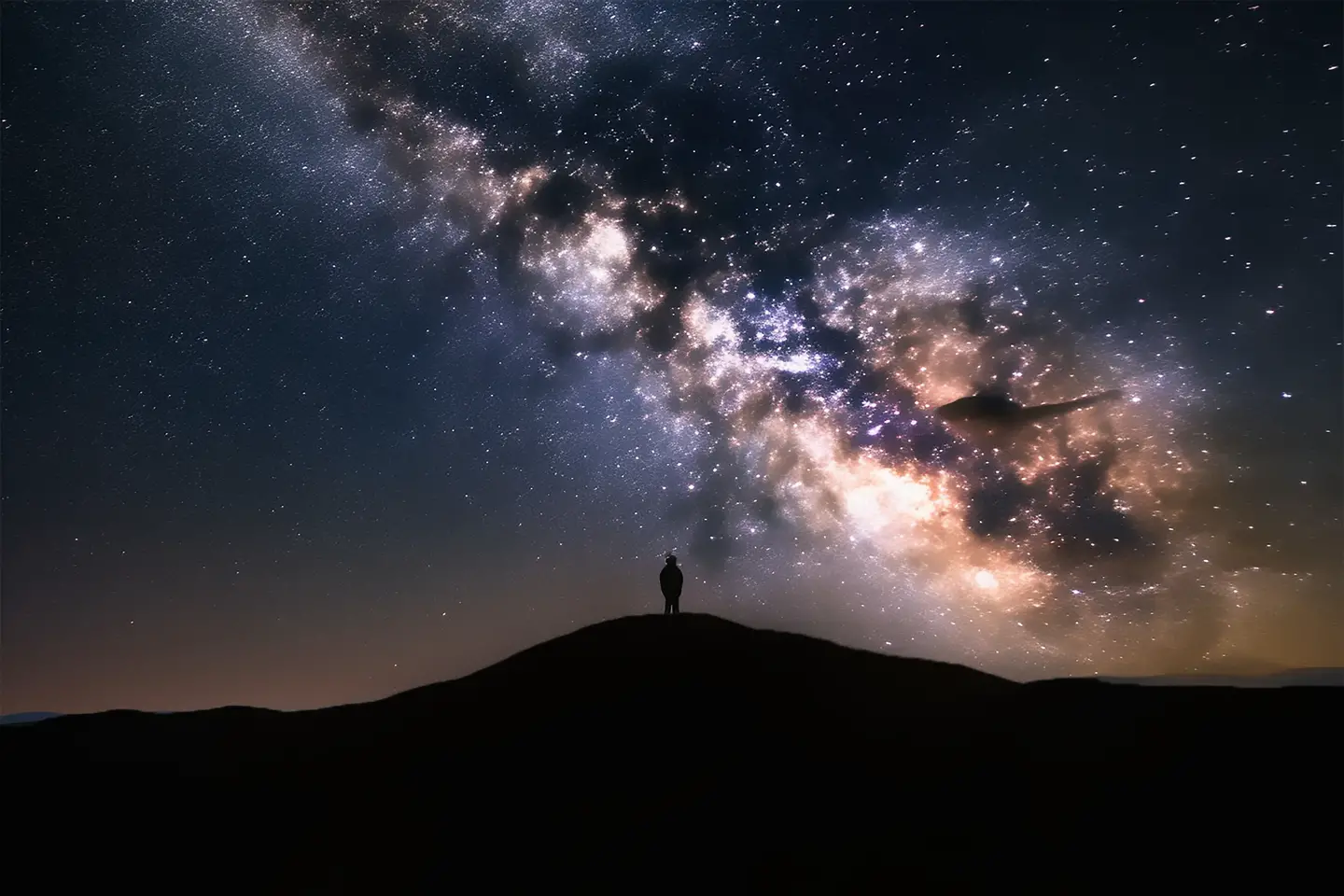For Carl Sagan, renowned astronomer and militant atheist, God’s place in the universe was certain: “The cosmos is all that is, or ever was, or ever will be.”[1] For Richard Dawkins, exponent of the “new wave” of atheism, true science is necessarily atheistic and materialistic. This paradigm dominates the scientific world today.
A third of a century after the collapse of the communist camp, “scientific atheism” is living a new life worldwide, in a more sophisticated form, but one that has penetrated much deeper into the public consciousness.
Science under communism
In communist regimes, power was based on the state, filled and “animated” by the party, which was the ultimate expression of the will of the people. This whole order inevitably led to progress, which was always inexorable. And for a very simple reason: progress was guided by science. Production planning was scientific, food rationing was scientific, social planning and even socialist ideology was scientific. Science was proclaimed the inherent reason of the state and the measure of truth. While appeals to scientific reason and objectivity may seem meritorious at first glance, in reality science was often just a smokescreen used to legitimise hidden ideological aims. It is true that high-level scientific research was carried out during this period, with notable results especially in the exact and applied sciences, but this was not what the communist notion of science was aimed at, but a particular form of pure and rigid materialism called “scientific atheism.”
A series of myths and superficial simplifications of the meaning of science was propagated in society. In part, they appropriated some of the attributes of the Creator whose existence was denied: scientists were endowed with vision, good faith, and noble intentions, and science had absolute objectivity, precision, and was guided only by sound logical arguments. It is easy to understand why those with different opinions and minorities were marginalised and even persecuted for not following the policies of the regime, which were justified by such an idealised science.
Renaissance science
While the totalitarian view of science was a distortion, simultaneously simplistic, ridiculous, and abusive, the seeds of modern science found in the European Renaissance were of a very different nature. Leonardo da Vinci succeeded in laying the foundations of medicine, anatomy, engineering, geology, architecture, art, and many other fields. Galileo Galilei faced the full force of the consensus of the time when he experimentally verified the heliocentric theory of Nicolaus Copernicus. Gottfried Leibniz discovered mathematical analysis, Isaac Newton laid the foundations of classical physics, and Francis Bacon sought to systematise the scientific method itself. A host of other giants of the sciences contributed to a body of knowledge that grew astonishingly in the centuries that followed.
It is important to note that almost all of these fathers of science were also religious people, mostly Christians, who not only saw no incompatibility between scientific endeavour and belief in God, but many also had theological concerns. These people were generally more concerned with the actual practice of science than with its definition. For them, science was the study of the laws of nature and human creative potential (engineering, architecture, art, etc.) using observation, reason, logic, mathematics, and imagination as tools. This was a sufficient definition in its generality and did not include belief in the existence or non-existence of a God or questions about the origin of mankind, life or the universe. It is a first theoretical definition, limited to describing “what science does” without giving an opinion on the limits of science (how accessible everything that exists/can exist is to scientific investigation).
The Renaissance philosopher Francis Bacon focused on “how science is practised” and was instrumental in articulating the “scientific method” by formulating the following series of steps: start with an assumption or theory, on the basis of which predictions are formulated that can be repeatedly tested experimentally; if at least one test fails, then the initial assumption is proven false; if all tests are successfully passed, then the assumption is considered “provisionally” true (until proven otherwise). This is a quintessentially empirical method, which assumes that a theory can never be proved with absolute certainty, but that confidence in it grows as it withstands more tests. This definition, which is not concerned with the existence or non-existence of the supernatural or with the limits of science in describing reality, was sufficient for both the Renaissance scientists and those who followed them centuries later.
Materialism and Naturalism
Science’s departure from neutrality occurred mainly against the background of the rise of atheism in the 19th century, through two older but very important ideologies: materialism and naturalism. For materialists, there is nothing but matter and energy. Materialism thus makes a strong claim about the nature of existence, the natural and the supernatural: reality is only physical and entirely physical, there is nothing else outside of physical existence. But this is a premise, not a requirement or a demonstration. Naturalism is the pragmatic application of materialist ideology to science: it is how science can explain everything that exists in terms of physical laws, excluding any recourse to the supernatural as a possible explanation.
The widespread adoption of methodological naturalism in science, starting in the mid-19th century, was strongly supported by the birth of evolutionary theory and established the incompatibility, or even hostility, between science and belief in God. This hostility gradually spread from the scientific elite to the majority of those who practised science and, strikingly for the last three decades, to the majority of educated people in the developed societies of the world.
The process has been driven by the naturalistic argument that science can only investigate natural, not supernatural, causes. The observation is valid, but while it was valid for the pioneers of science during the Renaissance, they did not find it a reason to exclude God from the sphere of existence. The difference lies in the use of the assumption of materialism. Today, not only is scientific investigation limited to the natural, but reality itself is seen as limited to what can be scientifically investigated. Through such reasoning (sophistry, actually), methodological naturalism implicitly contains the materialist premise about reality, even if materialism is not always explicitly assumed.
Thus, since any supernatural agent is excluded from the outset, whenever no reasonable scientific explanation can be found for a phenomenon or observation, naturalistic science is forced to accept any possible explanation, no matter how improbable. The spontaneous emergence of life, the accumulation of new information in the evolution of species, and the serendipitous determination of the astonishing precision of the universal physical constants that make life possible are just some of the matters with such tiny mathematical probabilities that they are not even worth considering. Yet the science of methodological naturalism does not question its competence in the face of these probabilistic impossibilities, but accepts the impossible as possible and even probable because of its a priori commitment to materialism.
It must be made clear that the materialist hypothesis is not a requirement arising from observations or the scientific process, but a premise of methodological naturalism. Atheist Professor Richard Lewontin, an authority on genetics and evolutionary biology, surprises us with his sincerity: “Our willingness to accept scientific claims that are against common sense is the key to an understanding of the real struggle between science and the supernatural. We take the side of science in spite of the patent absurdity of some of its constructs, in spite of its failure to fulfil many of its extravagant promises of health and life, in spite of the tolerance of the scientific community for unsubstantiated just-so stories, because we have a prior commitment, a commitment to materialism. It is not that the methods and institutions of science somehow compel us to accept a material explanation of the phenomenal world, but, on the contrary, that we are forced by our a priori adherence to material causes to create an apparatus of investigation and a set of concepts that produce material explanations, no matter how counter-intuitive, no matter how mystifying to the uninitiated. Moreover, that materialism is absolute, for we cannot allow a Divine Foot in the door.”[2]
Gödel’s challengeIn 1931, Kurt Gödel’s incompleteness theorem shook the world of mathematics by demonstrating limits to logic and mathematics that were completely unimaginable. Simply put, Gödel showed that any theory based on axioms and mathematical logic is fundamentally incomplete because it lacks the power to express the “whole truth” it contains. There will always be truths that cannot be expressed in terms of a theory, and this weakness applies, surprisingly, even to the language of mathematics. Gödel’s theorem can be applied to the issue of materialism. Based on the premise of pure materialism—that is, that reality is completely described by the laws of mathematically expressible physics—atheism has redefined science. It is clear from this that pure materialism necessarily relies on mathematically expressible models and theories of reality which, according to Gödel’s remarkable theorem, are fundamentally incomplete in describing reality. Therefore, there are always “realities” or “truths” that are completely inaccessible to knowledge, no matter what model we adopt. This argument does not tell us anything about the existence or non-existence of the supernatural, but only shows us that there is always room for the supernatural and God in any mathematical theory of reality. It also shows that the materialistic premise that there is nothing outside of matter and energy cannot hold. |
Evolutionism and scientism
The infiltration of atheism, through materialism, into the popular definition of science was decisively reinforced in the mid-19th century by the advent of the theory of evolution. Richard Dawkins remarked: “Although atheism might have been logically tenable before Darwin, Darwin made it possible to be an intellectually fulfilled atheist.”[3] For atheism, the origin and development of life had long been its greatest problem, so the “solution” offered by Darwinism became one of its main points of support. Subsequently, evolutionism has become widely accepted among scientists, and while not all evolutionists are atheists, evolutionism itself is arguably the main agent promoting atheism today.
The success of evolutionism in “converting” educated people has given rise to a positivist[4] school of thought about the power of methodological naturalism in science—scientism. Scientism is the belief in the universal applicability and competence of the scientific method and approach to all matters of human knowledge, from the natural sciences to philosophy and metaphysics. The physicist Stephen Hawking surprised many with his implicit adherence to scientism: “Why are we here? Where do we come from? Traditionally, these are questions for philosophy, but philosophy is dead. Philosophers have not kept up with modern developments in science… Scientists have now become the bearers of the torch of discovery in our quest for knowledge.”[5]
There are other definitions of scientism, such as “an exaggerated trust in the efficacy of the methods of natural science applied to all areas of investigation.” Critics of scientism point out that the methods of naturalistic science should not be imposed on fields such as philosophy, metaphysics or theology, which deal with different kinds of questions from those accessible to naturalism. To insist that naturalistic science can answer questions outside its scope would be not only a lack of humility uncharacteristic of the origins of modern science, but also a transformation of science into religion.
Atheists old and new
Richard Dawkins, Christopher Hitchens, Daniel Dennett, and Sam Harris are four of the most prominent representatives of the “new atheists” (during a debate, the four ironically dubbed themselves “the four horsemen of the non-apocalypse”). Irony aside, however, the last three decades have witnessed a powerful influence of this new wave of atheists on science, and especially on the public perception of science. The new atheists have not come up with new definitions or concepts, but have been characterised by an intense involvement in publication, debate, campaigning, and activism of all kinds in support of atheism and, in particular, evolution as the cornerstone of anti-theistic arguments. The militancy and vehemence of their attacks on the idea of religion have perhaps been matched only by their firm adherence to materialism, methodological naturalism and, to a considerable extent, scientism. Their success has been so great that most educated people today believe in evolutionism. Moreover, those who do not subscribe to this ideology show real courage in stating their opinions publicly, because of the ever-present threat of marginalisation and ridicule from evolutionists.
Symptomatic of the way the new scientific atheism is taking hold is the dictum of the former president of the American Association for the Advancement of Science, the geneticist Francisco Ayala: “The theory of evolution needs to be taught in the schools because nothing in biology makes sense without it.”[6] This statement is patently false, since we understand the functioning of the circulatory, endocrine or immune systems very well, without any questions about the origins of these systems. However, what we have here is the cumulative effect of an entire school of thought. Evolutionism is already held by an overwhelming majority of scientists. The fact that hundreds of thousands of scientists interpret nature in evolutionary and even atheistic terms, while very few accept the possibility of supernatural intervention, has tipped the balance of scientific opinion heavily in favour of the materialist view. It is probably because of this paradigm that Francisco Ayala made his mistake.
The new scientific atheism is undoubtedly much more sophisticated than the communist atheism, and has none of the artificiality and anachronisms of the Marxist ideology, succeeding where communist propaganda failed: in influencing the opinion of the majority of educated people.
The new scientific atheism also bears similarities to its totalitarian predecessor. We are dealing with the same scientism based on materialism: whereas in the old regime science justified everything from food rationing to five-year plans, naturalistic science now justifies schemes of social control, globalisation or claims to be able to explain and replace everything, including philosophy, metaphysics or theology. It propagates the same myth of the objectivity of science or the superior status of the scientist, despite the fact that, as far back as 1962, the philosopher of science Thomas Kuhn[7] pointed out that science promotes paradigms and revolutions despite the opposition of most scientists, who are also human, subject to mistakes, emotions, and character flaws like all other human beings.
But the most worrying parallel between the new and old scientific atheism is the vehemence and instinct of persecution. The new scientific atheism lives in the atmosphere of a holy war between the forces of good, represented by science and reason, materialistically understood, and the forces of evil, represented by ignorance, superstition and religion. Like the Communists before them, the new atheists seem to have no competition, only enemies.
Conclusions
The fathers of the Renaissance sciences, almost unanimously religious men, had a modest vision of their work, limited to the search for truth by rational methods. Today, the new atheistic ideology of science is much bolder and has penetrated deeply into the scientific world, with the theory of evolution winning over most educated people in the last third of the century. To this end, science has been redefined in materialistic terms: from the search for truth, in whatever form it may be found, to the search for what is naturalistically explicable. What is naturalistically explainable has, through materialism, become the definition of reality. Thus, with only a slight modification of the definition of science, the only God that still fits into it is one that is at most equal to nature.
Fortunately, this is not the true God, just as this is not true science. However, the rejection of God at this level is another sign of the times in which we live.


















